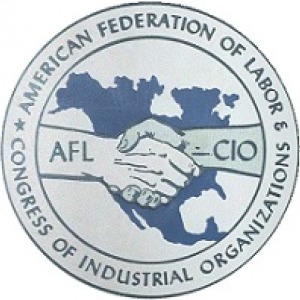October 18, 2011
By Marc Bussanich
LaborPress City Editor
The economy continues to struggle and Congress has yet to pass President Obama’s American Jobs Act. But Council Speaker, Christine Quinn, explained her vision for job creation and expansion in New York before the audience of the Association for a Better New York on Tuesday October 18, 2011.
She cited some initiatives the city has already pursued and some others still in the works. One area where she sees enormous potential for job growth in New York is the technology center. Google used to lease space on 111 Eighth Avenue, but in 2010 it purchased the property outright for almost $2 billion.
Quinn noted how the Council and the Partnership for New York City helped launch NYC Tech Connect, which provides the necessary resources to help entrepreneurs launch and grow their technology start-ups.
There are plans, in collaboration with CUNY, to open a business incubator called the Center for Innovation, “which will house up to twenty-five new companies,” said Quinn.
While the city is committed to launching and expanding businesses, it faces the challenge of providing a sufficiently educated work force. Quinn addressed that by announcing that “Mayor Bloomberg is working to bring a world class applied science school to the five boroughs.”
But for now, some companies are facing a shortage of highly skilled workers. Quinn mentioned that the owners of the interactive agency HUGE told her that the lack of a highly-skilled labor pool is the biggest obstacle of doing business in New York.
Sam Weston, Communications Director for HUGE, said that the company has had to pass up new business opportunities because it didn’t have the skilled talent to complete the projects.
To help address the problem, HUGE began offering a 12-week educational program this past summer to recent graduates who “aren’t automatically qualified to work at HUGE and provide them with the necessary training,” said Weston.
Russell Tencer, CEO of Wind Analytics , said his company owes its start to city and state policy that helped his company gain a strong foothold in the growing wind power market. Thanks to a grant by the New York State Energy Research and Development Authority (NYSERDA), a public benefit corporation, the $1 million grant helped pay for the research and development of Wind Analytics’ proprietary software that provides government, commercial and residential property owners with data to understand exactly how much wind is being produced on their property, thereby empowering them to make intelligent wind turbine purchasing decisions.
Recognizing that not all city workers will receive highly specialized training to work in New York’s growing technology center, Quinn outlined her vision for jobs that will sustain New York’s middle-class. “I’m here to tell you, we are not going to let the dream of the middle class disappear,” Quinn told the audience.
It’s been decades since the last of the big manufacturers manufactured in New York. But Quinn cited the thousands of manufacturing “specialty shops” whose biggest challenge is figuring out how to export their products not just beyond New York’s immediate borders, but to world markets. According to Quinn, “New York lags way behind—we export just 7 percent of what we produce, compared to the national average of nearly 12 percent.”
As the chorus grows to re-manufacture in the U.S., Quinn said the Council “will continue to explore big ideas.” In November, the US High-Speed Rail Association is hosting a three-day conference where speakers such as Secretary of Transportation Ray LaHood and Chairman of the House Transportation and Infrastructure Committee John Mica will speak about the prospects for a high speed rail network. Quinn noted she may send staff to attend the conference to learn more about the benefits of high-speed rail to the city.
Letitia James, Council Member for District 35, was glad to hear Council Speaker Quinn talk about diversifying the city’s economy. “I’ve been a proponent for a long time that the city can’t simply rely on Wall Street to create jobs.” James would like to see a robust capital budget that includes funding for working-class New Yorkers to build energy-efficient residential and commercial properties.



